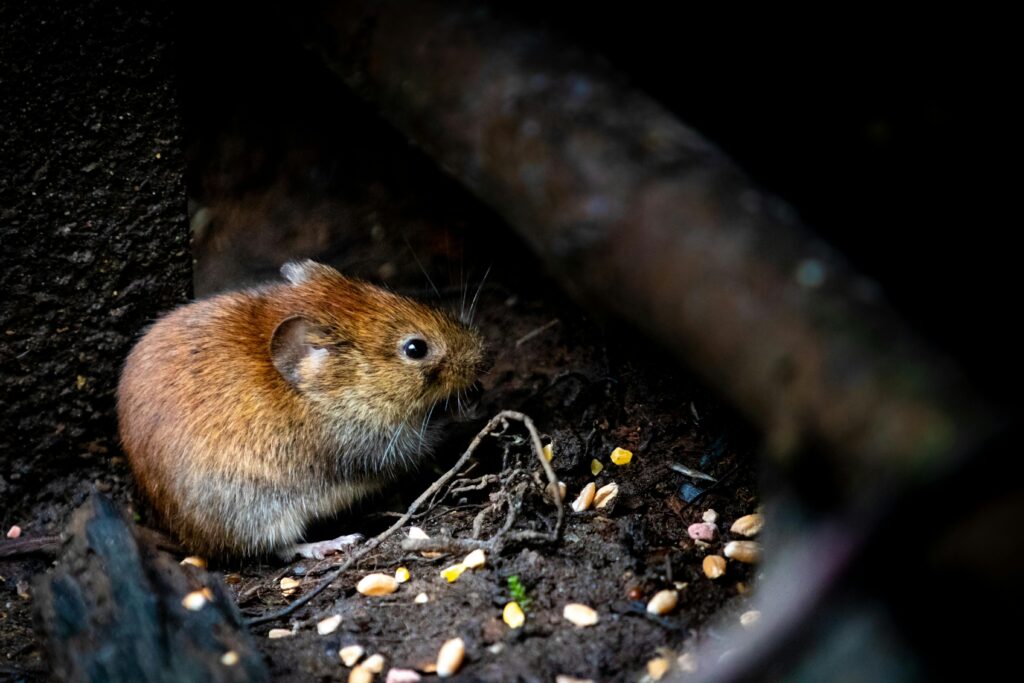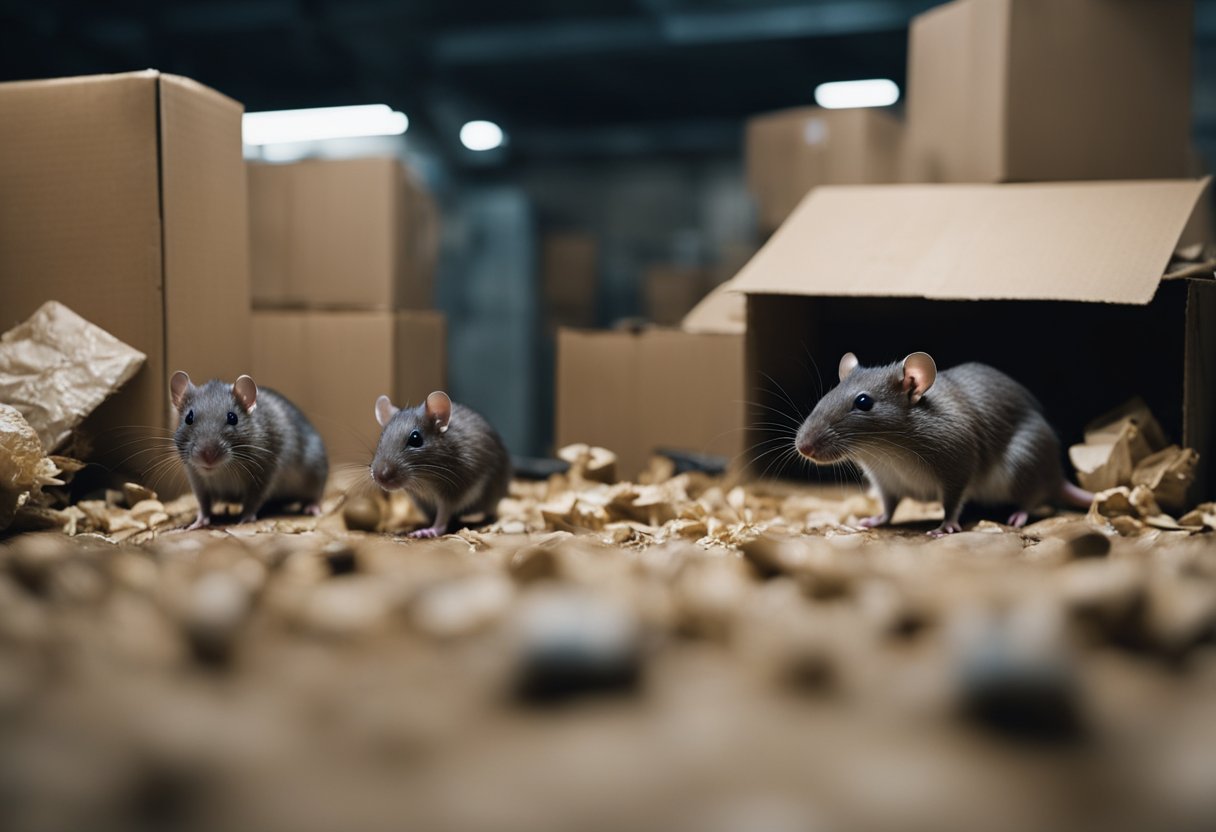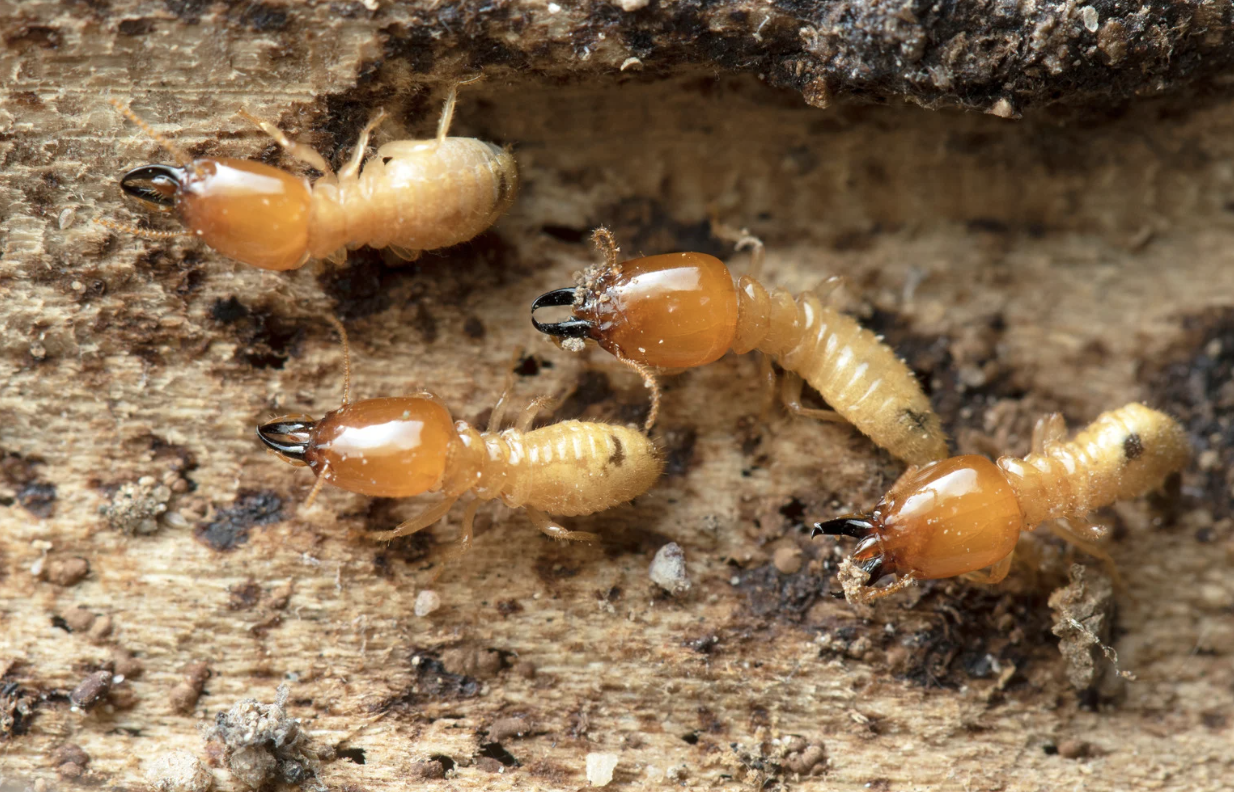What Are The Common Entry Points Rodents Use To Invade Properties?
Rodents infiltrate Sydney properties through surprisingly small openings, often no wider than a pencil or a 20-cent coin. These persistent pests exploit structural vulnerabilities that homeowners frequently overlook.
Typical rodent access areas include:
Identifying these entry points proves critical for effective control. Sealing just the visible holes whilst missing hidden gaps and cracks allows rodents to continue their invasion cycle. Professional rodent exterminator sydney conduct comprehensive property assessments to locate every potential access point, ensuring complete exclusion rather than temporary relief.
- Roof gaps where tiles meet eaves or fascia boards
- Vents in bathrooms, kitchens, and subfloor areas
- Drainage systems including stormwater pipes and sewer connections
- Door frames with worn weather stripping or gaps underneath
- Pipe penetrations where plumbing and utilities enter buildings
- Cracks in foundations, walls, and window frames
Mice can squeeze through gaps as narrow as 6mm, whilst rats require openings around 12mm. A single undetected crack provides unrestricted access for entire rodent families.
How Do Experts Identify Signs Of Rodent Infestation During Inspections?
Professional exterminators rely on multiple rodent infestation signs to confirm active infestations. Droppings identification serves as the primary indicator—mice leave small, black, rice grain-sized pellets scattered along walls and in cupboards, whilst rats produce larger, capsule-shaped droppings.
Key Indicators of Rodent Infestation
- Gnaw marks: Look for signs of chewing on wooden beams, plastic pipes, and electrical cables. Fresh gnaw marks will appear lighter in colour, while older damage will be darker.
- Greasy smudges: Check for oily streaks along walls and baseboards where rodents have been moving frequently.
- Sounds: Listen for scratching, scurrying, or squeaking noises during the night when rodents are most active.
- Nesting materials: Look for shredded paper, fabric, or insulation which could indicate the presence of nests.
- Footprints and tail marks: In dusty areas, look out for tiny footprints or tail drag marks that can provide clues about rodent activity.
- Odour: Be aware of a distinct musky smell resembling ammonia, which indicates established colonies.
For a comprehensive understanding of these signs, it’s beneficial to refer to resources like this one detailing the signs of a rodent infestation.

The Importance of Combining Indicators
Experienced professionals understand that relying on a single sign may not provide an accurate picture of the infestation. By combining multiple indicators such as droppings, gnaw marks, sounds, nesting materials, footprints/tail marks, and odour detection techniques they can:
- Assess the severity of the infestation
- Identify potential entry points
- Develop targeted treatment strategies
What Tools And Techniques Do Professionals Use To Track Rodents’ Movements?
Professionals rely on rodent tracking powders that adhere to rodents’ fur and feet, creating visible trails that reveal their pathways through properties. These non-toxic powders illuminate movement patterns, helping exterminators pinpoint nesting sites and frequently used routes between food sources and shelter.
Bait stations serve dual purposes—monitoring activity levels and delivering controlled treatments. Experts position these stations along walls and in corners where rodents naturally travel, as these pests prefer moving along edges rather than open spaces. Snap traps complement this strategy, placed perpendicular to walls with trigger plates facing the skirting boards.
Glue boards work effectively in areas where traditional traps prove impractical, such as tight spaces or sensitive environments. Rodenticides remain a selective option, used judiciously when infestations reach severe levels. Safety protocols dictate careful placement away from children and pets, with tamper-resistant bait boxes providing an additional protective layer.
In specific settings like poultry houses, the strategies for rodent control may vary slightly to accommodate the unique environment. The combination of these rodent tracking tools creates a comprehensive monitoring system that maps infestation severity and guides targeted treatment approaches.
Furthermore, understanding the ecological aspects of rodent tracking can provide deeper insights into their behavior and movement patterns, further enhancing the effectiveness of pest control strategies.
How Are Entry Points Sealed To Prevent Rodents From Returning?
Professional exterminators use steel wool combined with caulk to create durable, rodent-proof barriers at identified entry points. This combination prevents gnawing since rodents cannot chew through steel wool, whilst the caulk secures it firmly in place and fills surrounding gaps.
Thorough sealing requires blocking every potential access point, no matter how small. Rodents can squeeze through openings as narrow as a 20-cent coin, making comprehensive coverage essential. Professionals inspect:
- Roof gaps and eaves where tiles meet walls
- Pipe penetrations through external walls
- Vent covers requiring mesh reinforcement
- Door sweeps and weatherstripping replacements
- Foundation cracks and weep holes
Professional assessment ensures long-term exclusion by identifying vulnerable areas homeowners might overlook. Experts understand building construction and rodent behaviour patterns, allowing them to anticipate potential future entry points. They use exclusion methods that account for seasonal building movement and material expansion, preventing gaps from reopening.
For instance, effective mice exclusion strategies are implemented to ensure these rodents do not find their way back into the property. Quality sealing work typically includes warranties, guaranteeing the effectiveness of rodent-proof materials used throughout the property.
What Integrated Approach Do Exterminators Follow For Effective Rodent Control?
Professional exterminators implement integrated pest management strategies that combine multiple tactics for maximum effectiveness. This comprehensive method ensures rodents are eliminated whilst preventing future invasions through systematic intervention.
The process unfolds in four distinct phases:
1. Inspection and Detection Specialists conduct detailed property assessments to identify active infestations, entry points, and nesting sites. They document droppings, gnaw marks, and travel patterns to understand the extent of the problem.
2. Treatment and Exclusion Targeted treatment begins with strategically placed bait stations and traps positioned along identified rodent pathways. The severity of infestation determines whether snap traps, glue boards, or rodenticides are deployed.
3. Entry Point Sealing Technicians seal all discovered gaps using steel wool and caulk combinations, blocking potential re-entry routes whilst treatment continues.
4. Ongoing Monitoring Follow-up inspections verify treatment success and detect any new activity. Professionals adjust strategies based on monitoring results, ensuring complete eradication and long-term protection against reinfestation.
What Preventive Measures Help Reduce Rodent Infestations In Sydney Homes?
Cleanliness eliminates the food sources that attract rodents to your property. Store pantry items in sealed containers, clean up spills immediately, and secure rubbish bins with tight-fitting lids to deny rodents easy meals.
Property maintenance extends beyond indoor spaces to your building’s exterior. Trim tree branches and shrubs at least 30 centimetres away from walls and rooflines, removing the natural bridges rodents use to access your home. Dense vegetation provides shelter and concealment for these pests.
Clutter removal around your property denies rodents hiding spots and nesting materials. Stack firewood away from the building, dispose of cardboard boxes promptly, and keep storage areas organized. Garden debris, old furniture, and accumulated materials create ideal rodent habitats.
Regular property assessments catch potential problems before they escalate. Schedule quarterly inspections of vulnerable areas like roof spaces, subfloors, and external walls. Early detection of gnaw marks, droppings, or small entry points allows for immediate intervention, preventing minor issues from becoming full-scale infestations.
How Do Professional Services Ensure Safety For Families And Pets During Rodent Control?
Professional exterminators prioritise pet-safe pest control Sydney solutions by selecting low-toxicity products whenever possible. Traditional rodenticides pose serious health risks if accidentally ingested by children or pets, prompting experts to favour safer alternatives in households with vulnerable occupants.
Strategic Placement of Treatments
Strategic placement of treatments forms the cornerstone of safe pest management. Professionals install bait stations in tamper-resistant enclosures positioned in areas inaccessible to curious pets and children. Snap traps and monitoring devices are secured in roof voids, wall cavities, and behind appliances where only rodents can reach them.
Family-Friendly Rodenticides
Family-friendly rodenticides undergo rigorous evaluation before deployment. Technicians assess each property’s unique circumstances—presence of pets, young children, or elderly residents—to determine the most appropriate treatment method. Many services now utilise mechanical traps as the primary control method, reserving chemical solutions for severe infestations only.
Post-Treatment Support
Post-treatment support includes detailed safety briefings for homeowners. Exterminators provide clear instructions about treated areas, recommended exclusion periods, and warning signs of accidental exposure. Follow-up visits verify treatment effectiveness whilst checking all safety measures remain intact.

Why Is Prompt Action Important When Dealing With Rodent Infestations?
Delaying rodent control allows these pests to multiply rapidly and cause extensive property damage. A single pair of mice can produce up to 60 offspring annually, turning a minor problem into a severe infestation within weeks.
Structural Damage and Fire Hazards
Rodents possess continuously growing incisors that drive them to gnaw constantly. They chew through timber beams, compromising structural integrity. Plastic piping becomes vulnerable to leaks, potentially causing water damage. The most dangerous threat involves electrical wiring—exposed wires from rodent gnawing create significant fire hazards in residential and commercial properties.
Health Risks and Contamination
Rodents contaminate food supplies through direct contact and droppings. Their urine and faeces carry pathogens that remain infectious for extended periods. Leptospirosis spreads through contact with rodent urine, causing severe kidney and liver damage. Hantavirus, transmitted through airborne particles from dried rodent waste, can lead to life-threatening respiratory conditions. These health risks from rodents escalate as populations grow unchecked, making urgency in rodent control essential for protecting families.
What Are The Typical Costs And Services Offered By Rodent Exterminators In Sydney?
The cost of rodent control Sydney services typically ranges from $220 to $440, with pricing determined by property size and infestation severity. Larger homes or commercial premises with extensive rodent activity require more resources and time, pushing costs towards the higher end of this spectrum.
Most professional pest control companies structure their pest control pricing to include comprehensive service features. Initial consultations often come with free property assessments, allowing experts to evaluate the situation without financial commitment from homeowners. This inspection determines the scope of work needed and provides accurate quotes.
Same-day service availability has become standard among Sydney exterminators, addressing urgent infestations that pose immediate health or safety risks. These rapid-response options prove particularly valuable when rodents threaten food storage areas or electrical systems.
Service packages typically encompass:
- Complete property inspection and entry point identification
- Strategic placement of traps and bait stations
- Professional sealing of access points
- Follow-up visits to monitor treatment effectiveness
- Detailed prevention advice tailored to your property
Related : What Is the Most Effective Termite Treatment in Sydney for Old Timber Homes?
FAQ’s on Expert Rodent Exterminator
Professional rodent exterminators in Sydney inspect common access areas such as roof gaps, vent openings, plumbing penetrations, door frames, and cracks in walls or foundations. Using their knowledge of rodent behaviour and construction vulnerabilities, they detect even the smallest openings—mice need only 6mm to enter, while rats require about 12mm.
Experts use tools like rodent tracking powders, UV light, snap traps, bait stations, and infrared motion sensors to monitor rodent pathways. Tracking powders leave visible trails along rodent routes, while bait stations help gauge infestation severity and identify high-traffic areas within the property.
Rodents commonly enter Sydney homes through:
Gaps in roof tiles or fascia boards
Unsealed vents (bathroom, kitchen, subfloor)
Pipe and utility line penetrations
Gaps under doors and around window frames
Drainage and sewer systems
Regular inspections of these areas are key to prevention and early detection.
Rodent exterminators look for signs such as:
Droppings and urine stains
Gnaw marks on wood, plastic, or wires
Oily rub marks along walls
Scurrying or scratching sounds
Nesting materials (paper, fabric, insulation)
Musky odours
These indicators help determine the infestation’s location and severity.
Professionals seal rodent entry points using steel wool and caulk, metal mesh, concrete patching, and weather stripping. These materials resist gnawing and adapt to seasonal movement in building structures. Roof voids, foundation cracks, and wall gaps are priority sealing areas during treatment.
Experts use Integrated Pest Management (IPM), a multi-step process involving:
Property inspection and entry point mapping
Trap and bait placement based on rodent behaviour
Sealing all structural gaps
Follow-up monitoring and adjustments
This eco-conscious approach focuses on long-term prevention, not just extermination.
Yes. Reputable exterminators use pet-safe rodent control techniques including tamper-proof bait stations, snap traps in inaccessible areas, and low-toxicity or mechanical solutions. Professionals assess each home’s layout and occupants before applying treatments to ensure family safety.
Delaying treatment can lead to:
Rapid population growth (a pair of mice can breed up to 60 offspring per year)
Property damage (gnawed wires, insulation, and plumbing)
Fire hazards from exposed wiring
Health risks like leptospirosis, hantavirus, and salmonella
Early intervention reduces long-term repair and treatment costs.
To keep rodents out, homeowners should:
Store food in sealed containers
Clean up crumbs and spills immediately
Secure garbage bins with tight lids
Trim vegetation away from walls and roofs
Inspect and repair small gaps quarterly
Remove clutter and nesting materials indoors and outdoors
Rodent extermination in Sydney typically costs between $220 and $440, depending on:
Property size and layout
Infestation severity
Required sealing and follow-up visits
Many services include free initial inspections and offer same-day emergency response. Packages often feature:
Full property assessment
Entry point identification
Trap and bait installation
Post-treatment monitoring
Prevention advice tailored to your home



